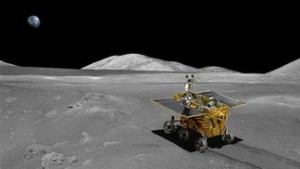Dec 24 2013
The Chinese probe Chang’e-3 landed on the Moon on Saturday. The chief commander of this mission is an EPFL alumni.
 © Glen Nagle
© Glen Nagle
The Chinese probe, Chang’e-3, landed safely on the Moon’s surface on Saturday December 14th. This event makes China the third country to reach the satellite, after the former Soviet Union and the United States. The last spacecraft to land on the moon was the soviet Luna 24, an unmanned mission that took place in 1976.
A few hours after the landing, the rover Yutu successfully got out of the spacecraft and began exploring the surroundings, in a location called the Bay of Rainbows. The lander and the rover could photograph each other, confirming that they are both functioning properly. From now on and for a three-month period, Yutu will survey the moon's geological structure and surface components. At the same time, the spacecraft will explore the landing site for one year.
Switzerland is directly concerned by this event in more ways than one. Although main space activities take place within the frame of the European Space Agency (ESA), collaborations with China and other emergent countries tend to be more regular in the space sector. The Swiss Space Center organized its first summer camps with Chinese universities in 2013 and maintains close contacts with Chinese space experts. Currently, they are working on a new space camera together with a team of Beihang University.
EPFL alumni
Moreover, the chief designer of Chang'e-1 and chief commander of the Chang'e-2 and Chang'e-3 missions, professor Ye Peijian, is an EPFL alumni. He studied at the Electronic and signal processing laboratory (ESPLAB), in Neuchâtel, where he obtained his PhD.
Chang'e-3 follows Chang'e-1, China’s first lunar observation satellite, in 2007, and Chang'e-2, China’s lunar orbiter, in 2010. The second phase of the Chinese lunar program, Chang’e-4, is expected to be launched in 2015.